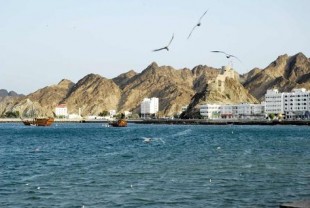

Oman tourism eyes 12m visitors a year by 2020

Oman is looking to attract 12m visitors a year by the end of the decade as it ramps up its tourism projects and rolls out a media marketing campaign.
The Sultanate recently opened the Royal Opera House Muscat in October and is also aiming to attract more visitors when it completes a $1bn tourist resort in Salalah and a $1bn Oman Conference and Exhibition Centre in Muscat, which is due to open late 2013.
“Oman received some 1.6 million tourists in 2010 and Oman’s Ministry of Tourism aims to increase this figure to an ambitious 12 million per annum by 2020. Such aspirations clearly show the country’s goal to develop as a major tourist and business destination,” said Mark Walsh, Group Exhibition Director, Reed Travel Exhibitions.
A key factor in Oman’s growth as a tourism destination is its position as a port of call for many cruise companies. Muscat’s cruise ship passenger arrivals increased to 230,000 during the 2010/2011 season, up from just 44,000 in 2007. This is expected to exceed 300,000 by 2015.
Consistent with Oman’s bullish forecast for tourism and its bold infrastructure strategy, online visitor registrations for ATM from Oman have risen 131% while the number of visitors interested in buying products and services from the Sultanate is up 109%.
Overall online registrations for the four-day show, which opens on 30 April 2012, are already up 132% from the same time last year, at nearly 2,000 visitors with key exhibitors from the Sultanate including the country’s Ministry of Tourism and Oman Air.
Oman’s the Ministry of Tourism also recently joined forces with state-backed Oman Air to host the First Annual International Media Treasure Hunt.
In a bid to promote the country’s tourism assets, five teams of European journalists crossed the country in a hunt for clues about Oman’s history, culture and geography.
The impact of Arab Spring anti-government protests did impact tourism numbers and investor confidence in the country, but this had begun to recover in 2012, according to the CEO of The Wave, a luxury housing project in Oman’s capital.
“The Arab Spring and the issues that affected the region, particularly Oman in the first half of the year, did impact on the project and sales in particular,” said Michael Lenarduzzi.
“It was a year of two halves. We sold 200 in the second half but very few in the first half. We would have been looking around 400 [sales], but in reality, all our sales came in the second half.”
The development was the first in the sultanate to allow 100 percent foreign ownership of freehold property.